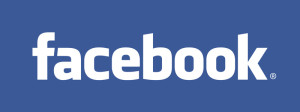 There’s a saying that a picture paints a thousand words – but can it also create a thousand questions?
There’s a saying that a picture paints a thousand words – but can it also create a thousand questions?
For anyone that’s connected to me on Twitter or Facebook, you’ll have probably noticed that my profile avatar for both sites is blacked out.
Far from being the results of a broken browser, it’s blacked out for a reason (the basic gist is a week-long protest at planned Internet laws in New Zealand). It’s led to questions why it’s blacked out, which has led to more knowledge about the cause it’s in support of – so, that’s good, right?
Not necessarily, it would seem.
One of the reactions my avatar received today was the suggestion of a principle-based unfollow on Twitter because my face wasn’t on show. Ari Herzog, someone I have shared numerous great conversations with, mentioned that I wasn’t being transparent or authentic. My avatar being black meant I was hiding. Does an avatar say all that?
One look at my Twitter profile shows you all the main information you need to know. Name, company, what I do, contact details, blog, website – basically the works. So that should cover the transparency angle. As far as authenticity goes, I’d hope that this would be down to people’s opinions through their interactions with me, rather than an avatar.
But maybe I’m wrong. Maybe the real power is in the avatar? Certainly, my blacked out one has raised many questions so people obviously notice any changes. So what’s your take?
Is the power in the picture, or the words behind the picture?


 This is a guest post from communications professional Arik Hanson.
This is a guest post from communications professional Arik Hanson.  Here?s an idea. What if we changed the model using social media and online tools?
Here?s an idea. What if we changed the model using social media and online tools?



![Reblog this post [with Zemanta]](http://img.zemanta.com/reblog_e.png?x-id=6620f982-4915-48e8-8b58-76cd7ac34912)